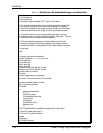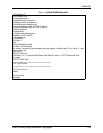
PostScript
Guide to Using Page Description Languages 1-39
There are circumstances when a transformation cannot be
avoided by any ordering of image data (such as when the image
sides are not parallel to the sides of the paper, or when the
image is skewed), but for many cases a rotation can be avoided
by ensuring that the data in the image is in the correct order.
Ensuring optimum image data order is complicated by the fact
that the rotations are not tied to the use of the
rotate
operator in
a PostScript program, or to implied rotations in the image-to-user
space transformation. The transformations specified in
PostScript are part of a specification of the desired position of an
image in terms of the default user coordinate system.
DocuPrint NPS/IPS only performs an image rotation when one is
required. Rotations of multiples of 90 degrees are optimized so
that the impact is not too great.
Because the data is already aligned with the printing orientation,
DocuPrint NPS/IPS does not perform any rotation of the image.
In the default user coordinate system, a rotate operation is
required.
Without the rotate operation, the PostScript specifies that the
image be placed on the page with its left edge (fast scan
dimension) parallel to the short edge of the paper. A 90 degree
counterclockwise rotation of the coordinate system is needed to
correctly specify the image orientation on the page.
It may be possible to arrange an appropriate order for the data by
correctly arranging the original when a scan is performed. It is
assumed that scanners produce data from a portrait scan in left-
to-right (fast scan), top-to-bottom (slow scan) order.
By rotating the original 90 degrees clockwise, you can obtain
data from the scanner with the fast scan direction bottom-to-top
(relative to the original), and the slow scan direction left-to-right,
matching the page scan directions for the correct output
orientation. Alternatively, you can have the data reordered by a
program before the PostScript master is created.
After determining that a certain scan orientation produces data
in the optimum order for printing, you can scan an image and
import it into an emitter. Some rotation may be necessary to
place the image correctly.
If the emitter performs a rotation by manipulating the data, then
the resulting PostScript master may have the data in the
incorrect order. It is also possible that the emitter may not alter
the data and change the transformations specified in PostScript
so that the initial ordering is preserved.


















